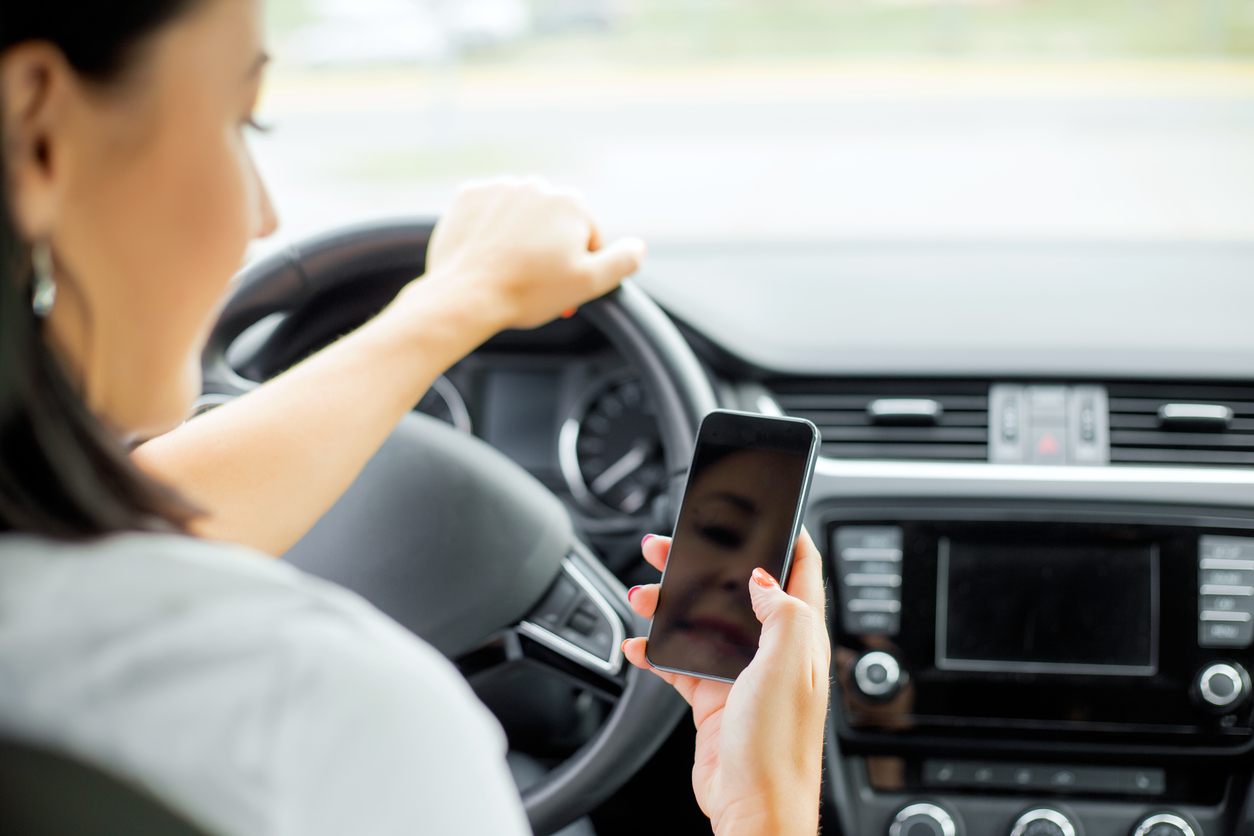
When your fleet drivers are behind the wheel, you expect them to pay attention to the road and do their best to avoid distractions that might lead to an accident. Unfortunately, there are many things that can distract a driver, even when it isn’t intentional. For safe driving, fleet drivers must have their eyes on the road, hands on the wheel, and full attention and focus on the task at hand. These three types of distracted driving – visual, manual and cognitive – are what can be the most risky.
Visual Distractions
The first type of distraction, and one of the most common with drivers, is visual distraction. These are things that take the driver’s focus and eyes off the road, even for a split second. This could be adjusting devices in the vehicle, like a radio or GPS, looking to the seat next to them to view a new text message on their phone or see who is calling, or looking outside when there is a distraction on the side of the road. All of these factors keep the driver from looking straight ahead where they need to be looking for safe driving.
Manual Distractions
The next type of distraction is manual distraction. These may or may not be combined with visual distractions. The driver is taking one or both of their hands of the steering wheel for a variety of reasons. It may be to answer a call or send a text message, grab their cup of coffee, or eat a meal while driving.
According to the National Highway Safety Traffic Administration (NHTSA), texting while driving has the biggest potential for distraction while driving. It is mainly due to the manual distraction, but also includes a visual distraction and cognitive distraction.
Cognitive Distractions
The last area of distractions while driving is the cognitive distractions. These are distractions that keep your mind from being focused during driving. If something else captures your attention or you are having trouble concentrating on the road, it could lead to potential accidents. You won’t be in the right state of mind to think fast or drive as safely as you should. This may be from emotional stress, family or money problems, talking to someone else in the fleet vehicle, or using the phone.
How to Prevent Distracted Driving
When you begin teaching your fleet vehicle drivers about avoiding distracted driving, it is important that they avoid all types of distracted driving. Many things combine all three, such as using a phone or texting, adjusting the radio or GPS, or eating or drinking. Here are some of the top things drivers can do to avoid distracted driving:
- Turn their cell phone off while driving so it is not tempting.
- Eat and drink before getting on the road only.
- Program the GPS before leaving and pull over if it needs to be adjusted.
Not only is it imperative your drivers are avoiding distracted driving, but you should have additional protection for your business with a commercial auto insurance policy.